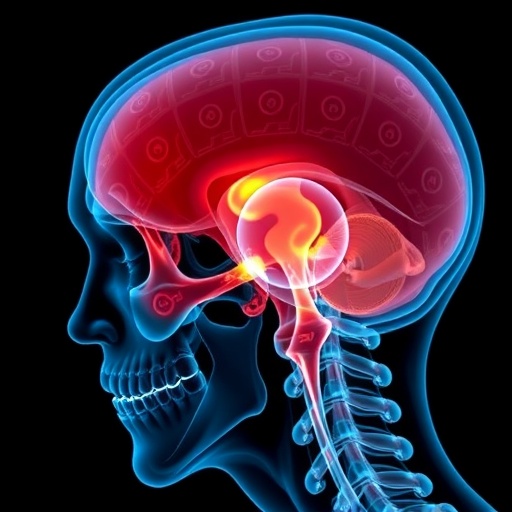In a groundbreaking study published in the Journal of Translational Medicine, researchers Yan, Li, and Liu, alongside their team, delve deep into the intricate relationship between soluble epoxide hydrolase (sEH) and M1 macrophage polarization, particularly in the context of temporomandibular joint (TMJ) osteoarthritis. This condition, prevalent in millions worldwide, remains a crippling issue characterized by inflammatory processes and cartilage degradation. The research team has taken significant strides in elucidating the potential therapeutic benefits of targeting sEH, unveiling new horizons in the management of this painful and often debilitating disease.
Osteoarthritis predominantly affects joint health, leading to chronic pain and restricted movement. Among its myriad forms, TMJ osteoarthritis has gained attention for its prevalence and far-reaching implications on the quality of life. Understanding the cellular and molecular mechanisms that contribute to cartilage damage within this joint is crucial. The new findings provide insights into the role of macrophage polarization in this process.
Macrophages, an integral part of the immune system, can adopt different functional states depending on the stimuli they encounter. The two main polarizations of macrophages are M1 and M2. M1 macrophages are typically associated with pro-inflammatory responses, while M2 macrophages promote tissue repair and anti-inflammatory actions. The balance between these two states is pivotal in regulating the inflammatory milieu within injured tissues. In cases of TMJ osteoarthritis, a predominance of M1 macrophages exacerbates cartilage breakdown and impedes healing.
The research highlighted how sEH plays a crucial role in modulating macrophage polarization. Soluble epoxide hydrolase is an enzyme responsible for the degradation of epoxyeicosatrienoic acids (EETs)—lipid signaling molecules known for their anti-inflammatory properties. By inhibiting sEH, EET levels can accumulate, potentially shifting the macrophage response from an M1-dominant phenotype to a more reparative M2 phenotype. This transition is vital in counteracting the inflammatory conditions prevalent in TMJ osteoarthritis.
In the laboratory phase of the study, the researchers employed a variety of methodologies to assess the impact of sEH inhibition on macrophage behavior. Primary macrophages from mouse models were exposed to specific inhibitors of sEH. The results were telling; upon inhibition of sEH, a marked shift in the polarization of macrophages was observed. The treated macrophages displayed reduced M1 markers and increased M2 markers, indicating a significant change in the functional spectrum of these immune cells.
The in vivo experiments further corroborated the lab findings. Using a well-established murine model of TMJ osteoarthritis, the researchers administered a targeted sEH inhibitor. The results revealed striking improvements in cartilage integrity compared to the untreated controls. Enhanced cartilage preservation was associated with decreased levels of pro-inflammatory cytokines, supporting the idea that the inflammatory response can be modulated by manipulating sEH activity.
Moreover, the study brings a novel therapeutic perspective to the management of TMJ osteoarthritis. By focusing on the modulation of immune cell behavior rather than solely targeting the symptoms, such as pain relief or inflammation management, researchers are advocating for a more holistic approach to treatment. The potential for sEH inhibitors to be translated into clinical therapies could revolutionize standard care protocols, aiming not just to alleviate suffering but to address the root causes of cartilage degeneration.
As the pursuit of targeted therapies gains momentum, it is clear that understanding the biochemical pathways involved in diseases like TMJ osteoarthritis is paramount. With the burgeoning field of precision medicine, the identification of biomarkers related to macrophage polarization and sEH activity could facilitate personalized approaches to treatment. Such strategies would enable clinicians to tailor interventions based on the individual inflammatory profile of patients.
The implications of this research extend beyond TMJ osteoarthritis. The role of sEH in modulating inflammation has far-reaching potential across various inflammatory conditions, including systemic diseases. The findings highlight the enzyme as not only a critical player in local joint inflammation but also as a possible target in chronic inflammatory diseases throughout the body.
In conclusion, the research by Yan, Li, and Liu et al. represents a significant advancement in our understanding of TMJ osteoarthritis and its underlying mechanisms. By targeting soluble epoxide hydrolase, the team has provided a promising avenue for clinical exploration, potentially changing how we approach treatments for cartilage-related injuries. This study lays down the foundational work necessary for further investigations that could lead to novel therapies and improved outcomes for those suffering from this debilitating disease.
With the prevalence of TMJ-related disorders on the rise, the insights gained from this study could not have come at a more critical time. The potential for a future where patients receive targeted therapies aligned with the mechanisms of their disease is not just a dream but an imminent reality, thanks to the groundbreaking work being done in the field of inflammatory research.
As researchers continue to unveil the complexities of macrophage polarization and its downstream effects, the hope is that the scientific community will pave the way for new drug development efforts. With each study, the vision for a world with better management options for TMJ osteoarthritis gets clearer, paving the way for improved quality of life for countless individuals worldwide.
Subject of Research: Soluble Epoxide Hydrolase and its Role in Macrophage Polarization in TMJ Osteoarthritis
Article Title: Targeted soluble epoxide hydrolase inhibits M1 macrophage polarization to improve cartilage injury in temporomandibular joint osteoarthritis.
Article References:
Yan, B., Li, Y., Liu, Y. et al. Targeted soluble epoxide hydrolase inhibits M1 macrophage polarization to improve cartilage injury in temporomandibular joint osteoarthritis.
J Transl Med 23, 969 (2025). https://doi.org/10.1186/s12967-025-07003-2
Image Credits: AI Generated
DOI: 10.1186/s12967-025-07003-2
Keywords: TMJ Osteoarthritis, Soluble Epoxide Hydrolase, Macrophage Polarization, Inflammation, Eicosanoids, Therapeutic Strategies, Cartilage Injury.




